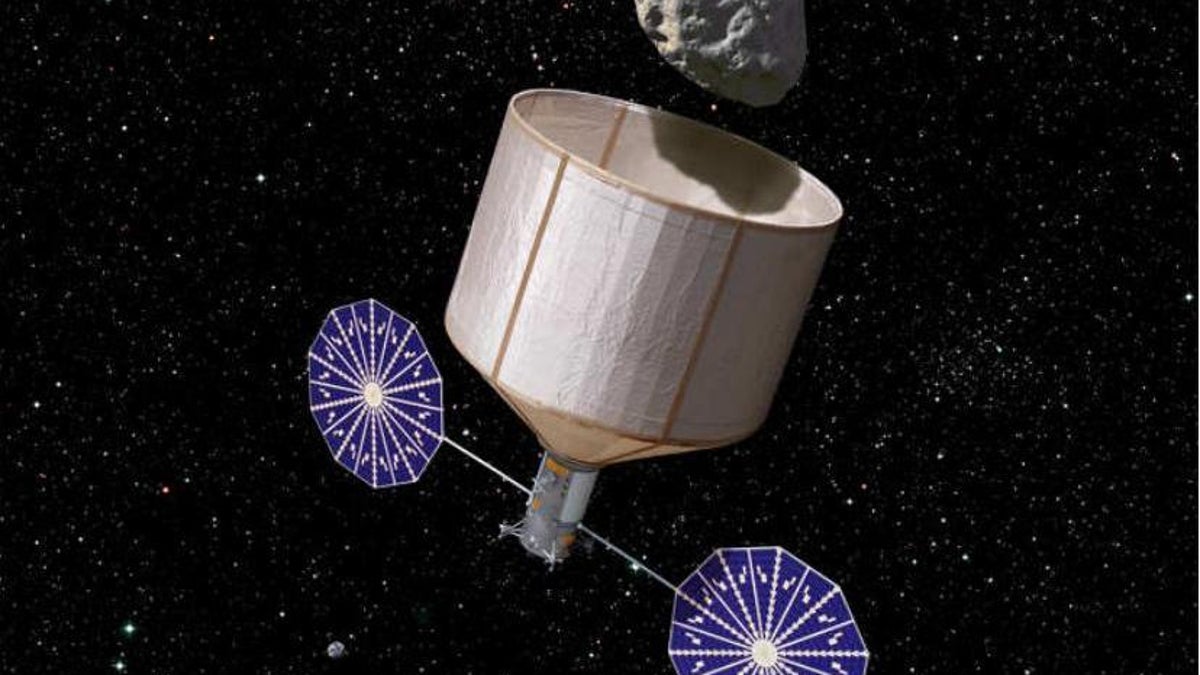Asteroid mining: Land grab in space
Planetary Resources seeks to mine asteroids to further space exploration and to bring resources back to Earth. Experts say the idea is no longer science fiction.

As people come to terms with the limits of the Earth's natural resources, startup company Planetary Resources is eyeing another source: space.
The company, founded by XPrize Foundation CEO Peter Diamandis and aerospace engineer Eric Anderson, will launch at the Museum of Flight in Seattle later today. Its list of advisers includes Google CEO Larry Page, former Google CEO Eric Schmidt, filmmaker James Cameron, and the former Microsoft chief software architect and space tourist Charles Simonyi. Other advisers are Google board member and investor Ram Shriram and Ross Perot Jr., son of the former presidential candidate.
Planetary Resources' goal is to "expand Earth's resource base" by tapping natural resources in space, according to a media advisory sent out last week. "This company will overlay two critical sectors -- space exploration and natural resources -- to add trillions of dollars to the global GDP. This innovative start-up will create a new industry and a new definition of 'natural resources,'" it said.
In an interview earlier this month, Diamandis indicated that mining asteroids is the company's main pursuit. And surprisingly, aerospace experts say that extracting resources from asteroids and near-Earth objects is no longer the stuff of science fiction.
A study (PDF) released this month by the Keck Institute for Space Studies (KISS) at the California Institute of Technology's Jet Propulsion Laboratory concluded the technology to bring an asteroid near Earth to mine its resources could by done by 2025. It estimates the cost of the first "asteroid capture and return" mission would cost $2.6 billion.
A separate study done by the National Commission on Space study (PDF) by NASA in 2009 argues that resource extraction from the moon and asteroids is essential for further space exploration and colonizing space.
Although the company has said little about its plans, Diamandis told a Forbes reporter that opening up the resources of space is critical for humanity and that the Earth is a "crumb in a supermarket of resources" when all of space is considered.
To actually extract these resources scientists and engineers would need to identify the makeup of different asteroids that could be reached by spacecraft with available energy, he said.
"Ultimately we want to develop the technology to safety extract the (asteroid) resources and then return those resources to Earth you want to use here and keep those resources like oxygen, hydrogen -- fuel -- [and] water off earth," he told Forbes. Giving the complexity and restraints of drilling for oil and gas in deep waters, Diamandis said he is optimistic that mining asteroids is realistic.
It's a theme that Diamandis has touched on frequently. In a 2010 interview with Big Think, he said that people have a moral imperative to explore space for its mineral and metal wealth.
"The question is, do you continue to rape and pillage Earth, or if you have the ability to extract that information from outside resources, outside of Earth, then that would be a mechanism to uplift the bottom billion or so of society," he said.
Realistic resource for Earth?
How do one start mining an asteroid? Although it's still not clear what Planetary Resources specific plans are, the KISS study provides some indications of what's in the realm of feasible, according to space experts. The study says that a relatively small asteroid about seven meters, or 22 feet, in diameter could be retrieved using technology available this decade and brought back to be placed in orbit around the moon.
One of the key technical developments is solar panels capable of launching the payload for its multi-year mission once in deep space. Also vital are robotic spacecraft able to capture the asteroid, which could weigh more than one million pounds, and start a journey toward the moon.
These spacecraft could also, in theory, mine and bring back materials from asteroids to Earth but the one of the study's authors told the Wall Street Journal he was skeptical that this could be done because of the high cost of entering space from Earth.
Asteroids could contain minerals already mined on Earth, such as iron, nickel, sulfur, and platinum group metals. For space exploration, valuable elements will be oxygen, carbon, and hydrogen for fueling rockets. Other materials could act as shields from cosmic rays, according to the study's authors who say it would give NASA capabilities it hasn't seen since the Apollo missions.
In terms of safety, the authors argue that there will be a number of safety measures including targeting only asteroids which would break up if they entered the Earth's atmosphere. "With these levels of safety -- all of which will be further analyzed and assessed during the phase II study -- we can conclude the mission could be safe and that it could be explained convincingly to the public. Furthermore, this mission would help make it safe for humans to go on longer voyages beyond the Moon," they said
In addition to the complex aerospace engineering, one of the key technical challenges of asteroid mining is locating suitable asteroids and understanding their chemical makeup beforehand. Another obvious challenge is converting raw materials into water and other desired materials.
There are already a handful of private space exploration private companies, backed by tech industry billionaires including Paul Allen, Jeff Bezos, and Elon Musk. But even with well-heeled backers, the cost of launching rockets into space remains very expensive.
Regardless of how far off the ground Planetary Resources gets, its company launch marks another important point in the transition to private space exploration and represents a group of entrepreneurs who are truly thinking big.

